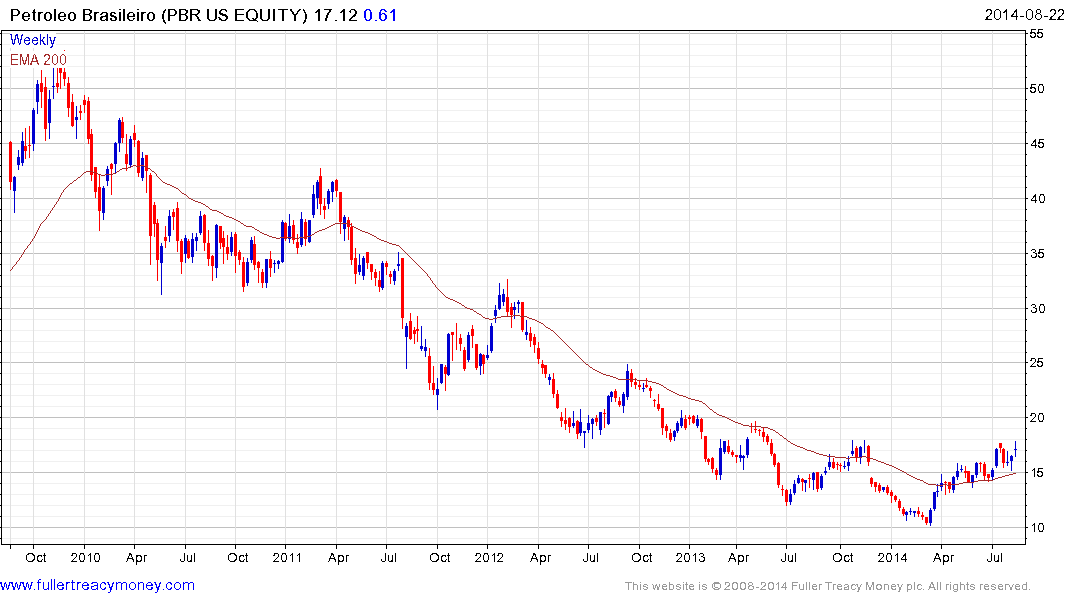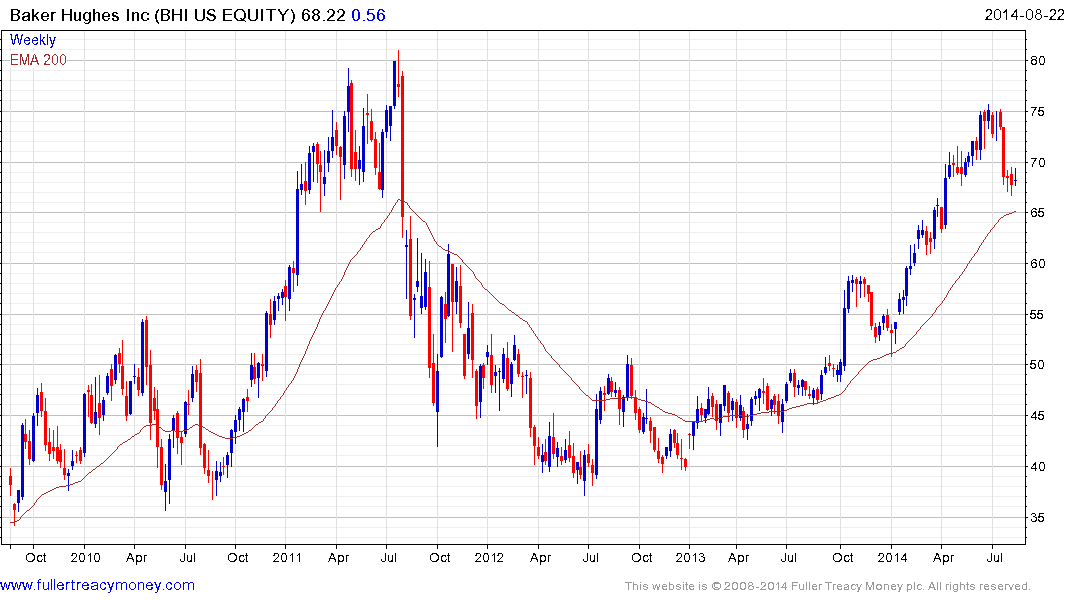Oil Review 2014
Thanks to a subscriber for this highly informative report from Natixis. Here is a section on Petrobras:
From less than 300,000b/d in early-2013, average Petrobras pre-salt output reached 435,000b/d in May. June’s record high pre-salt output of 520,000b/d was achieved with only 25 producing wells; ten in the Santos basin and fifteen in the Campos basin.
Petrobras plans to add 5 new FPSOs this year. 17 new presalt wells are scheduled to be connected to platforms that are already in position, while another five will be connected to newly positioned platforms. Collectively, this is expected to add as much of 550,000b/d of new crude output. While the slow start to this year’s production makes achievement of Petrobras’ 7.5% growth target difficult, the additional crude supplies due to come on-stream clearly highlight the potential for a more rapid increase in Brazilian crude output over the coming years.In 2015-16, Petrobras plans to add eight new pre-salt platforms in the Santos basin (one in 2015, followed by seven in 2016, focusing in particular on the Lula field). Once up and running, this is expected to take pre-salt output above 1mn b/d.
Petrobras CEO Maria das Gracas Silva Foster plans to increase output to 4.2mn b/d by 2020, of which pre-salt output will contribute 2.2mn b/d. Output from third party producers, which contributed a negligible amount in 2013, is expected to add an additional 800,000b/d, taking total Brazilian crude output to around 5mn b/d by 2020. This will require Petrobras’ investment of $221bn between 2014-18, of which $154bn will be exploration and production. Including the $45bn share of investment by Petrobras’ partners, close to $200bn will be invested in exploration and production alone.
?One important factor behind the slowdown in Brazilian crude output since 2011 has been the sharp decline rate at conventional fields, especially those in the Campos basin. From more than 1.75mn b/d at the peak in 2012Q1, Petrobras’ output in the Campos basin fell to a low of less than 1.43mn b/d in February this year. With pre-salt output in the Campos basin generating 200,000b/d or more this year, this puts the overall decline in conventional output in the Campos basin somewhere around 500,000b/d. In large part, these decline rates at conventional fields were a reflection of Petrobras’ increased focus upon pre-salt fields, exacerbated by the company’s squeezed profitability and scarcity of capital. In an effort to support output levels at mature fields, Petrobras has contracted four new service platforms that will carry out maintenance at offshore platforms over the period 2014-17. By April 2014, efficiency rates at Campos basin platforms had already recovered to 81%, their highest level in almost four years. If this improvement can be maintained, then higher conventional output will complement the additional crude being generated by pre-salt wells.
Here is a link to the full report.
Petrobras had to raise a great deal of capital to fund the development of the pre-salt discoveries, some of the world’s largest in recent times, as well as the refining capacity to deal with the additional supply. The process of developing these fields has been lengthy but supply is ramping up and the deterioration in the share price moderated as pre-salt supply kicked in.

Petrobras’ ADR rallied back above the 200-day MA in May and has spent more time trading above it than at any time since 2009. A sustained move below the trend mean would be required to begin to question recovery potential.

A news item yesterday highlighted Baker Hughes’ probable success in securing a contract with Petrobras to supplying services as it reinvests in conventional fields and develops new deepwater resources. The share is currently trading in the region of the 200-day MA having unwound the majority of its earlier overextension.
Back to top


